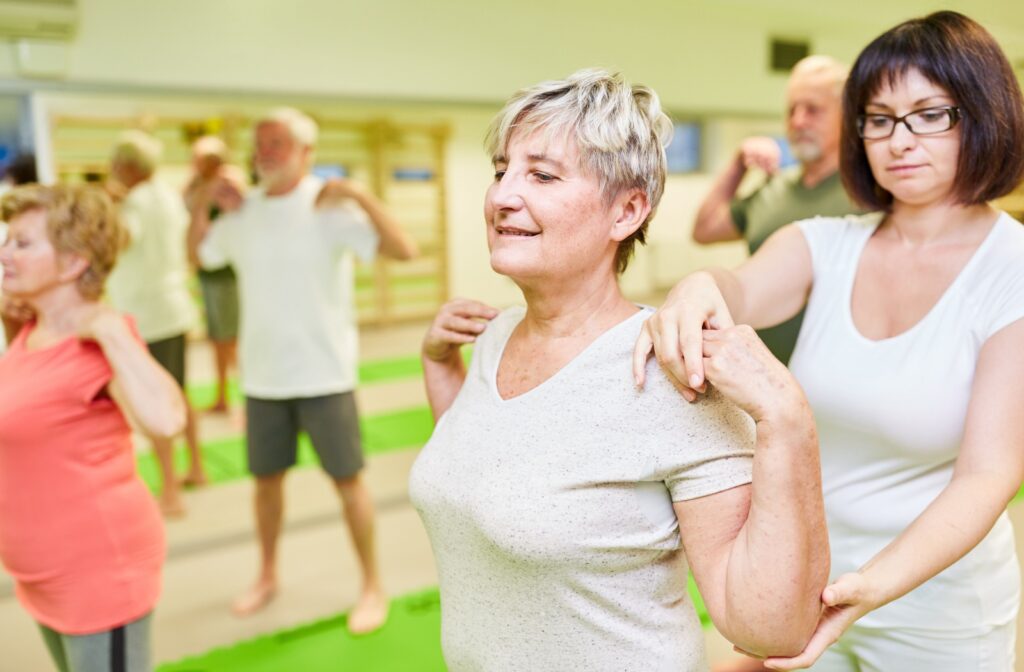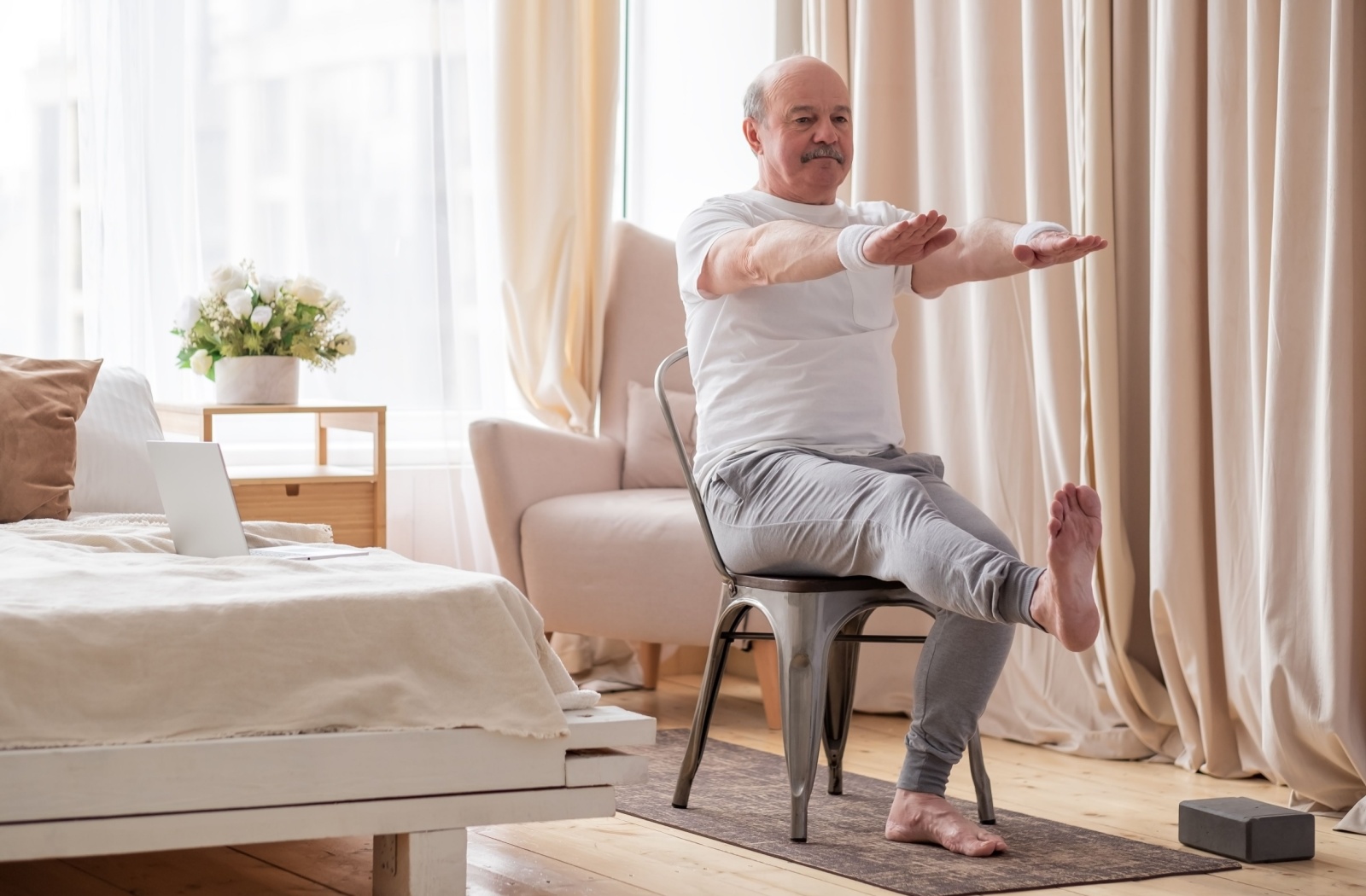Staying steady on your feet can get harder as you age, but occupational therapy (OT) offers practical solutions to improve balance and reduce fall risks. Occupational therapists can use a variety of techniques to help you move confidently and safely through your day, including:
- Therapeutic exercises to strengthen muscles and improve stability
- Sensory integration techniques to enhance how your body senses movement
- Postural training to promote better alignment and balance
- Adaptive equipment like grab bars or walkers to prevent falls
- Functional task training to practice everyday movements and improve mobility
Many senior living communities offer occupational therapy, providing support to help residents maintain their independence. If your loved one is struggling with balance, exploring OT options could be a step toward safer, more comfortable living.
What Is Occupational Therapy for Seniors?
Occupational therapy focuses on helping people perform everyday tasks and maintain independence by addressing physical, sensory, or cognitive challenges. For seniors, OT often emphasizes:
- Safety
- Mobility
- Maintaining self-sufficiency
When it comes to balance issues, occupational therapists work to strengthen mobility, reduce the risk of falls, and boost confidence in performing daily activities. Whether it’s standing, walking, or getting safely in and out of bed, these targeted interventions can help older adults reclaim their stability and freedom.
Therapeutic Exercises for Improved Balance
Therapeutic exercises are at the core of OT for balance. These exercises aren’t like your typical gym workout; they’re thoughtfully designed to target specific muscle groups and improve coordination. How they can help with balance:
- Strengthen core and leg muscles to provide better support
- Enhance proprioception (your body’s ability to sense movement and position)
- Improve coordination to prevent trips and stumbles
Examples
Tasks like toe raises, seated leg lifts, or using a stability ball for supported movements are common. These exercises are low-impact, making them ideal for older adults. Therapists can adapt exercises to meet any person’s fitness level and progress as strength and coordination improve.
Sensory Integration Techniques in Occupational Therapy
Have you ever felt off-balance in the dark or when stepping off an escalator? This disorientation is often tied to sensory input. Your balance relies on your ability to process information from your eyes, inner ears, and body. Sometimes, those systems need some fine-tuning.
Sensory integration therapy helps retrain the brain to interpret sensory signals more effectively. How it helps balance:
- Reduces dizziness or vertigo by strengthening sensory pathways
- Improves spatial awareness, which is essential for avoiding obstacles and maintaining stability
Examples
Therapists may use light or sound stimuli to improve vestibular (inner ear) function or incorporate exercises that require both eyesight and body coordination, such as stepping onto a patterned mat. This technique is especially beneficial for those with conditions like vertigo, Parkinson’s disease, or after a stroke.

Postural Training & Balance Enhancement
Many balance issues stem from poor posture. If your posture is off, your center of gravity shifts, making it harder to stay stable. Postural training can redefine how you carry yourself to reduce strain and improve balance. How it helps balance:
- Realigns the body’s center of gravity for improved stability.
- Minimizes strain on joints and muscles, reducing pain during movement.
Examples
Therapists may guide clients to practice standing exercises using mirrors for visual feedback. Simple techniques, such as focusing on shoulder alignment or engaging core muscles while walking, can also improve posture. The goal isn’t just better balance but also better comfort and confidence in everyday movements.
Adaptive Equipment for Fall Prevention
Sometimes, balance improvements come in the form of tools. Adaptive equipment can make daily tasks safer and easier, especially for older adults at high risk of falls. OT professionals can recommend customized aids based on their needs. This equipment can help balance through:
- Reducing reliance on unstable movements by providing support
- Preventing hazardous falls by adapting the environment for safety
Examples
- Walkers and canes: Provide added support for walking
- Grab bars and handrails: Installed in key areas like bathrooms or along stairs
- Non-slip mats and shoes: Enhance traction during movement
An occupational therapist can help ensure the tools being used are suitable for your loved one and teach them how to use the equipment effectively for maximum safety.
Functional Task Training for Balance & Mobility
Once the basics are addressed, OT often focuses on applying balance skills to real-life tasks. Functional task training is all about practical, hands-on exercises tailored to the activities someone performs every day. How it helps balance:
- Builds confidence by practicing in real-life situations
- Improves balance during specific daily activities, such as cooking or dressing
Examples
- Teaching safe techniques for climbing stairs or grabbing items from a high shelf
- Simulating getting out of a car or bed safely
- Practicing walking on uneven surfaces, like gravel, to boost mobility outdoors
This type of training is particularly empowering because it directly translates into living independently and safely.
Taking the Next Step Toward Better Balance
Balance is about living life fully and confidently. Occupational therapy offers older adults a unique, supportive way to regain stability and stay active. If balance challenges are keeping your loved one from enjoying daily life, speaking with an occupational therapist can make all the difference.If your loved one could benefit from personalized care, contact the team at All American Assisted Living at Coram to learn how we can help them live safely and comfortably.





